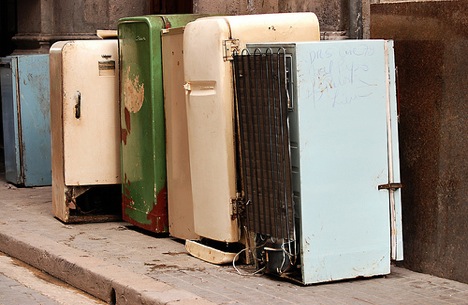Everyone knows the frustration in waiting for the hot water to come out of the faucet in the morning. Because a single hot water tank is often placed in one end of the house such as the garage and the bathrooms are situated at the opposite end, it is not unusual to have to wait one minute before hot water arrives while the cold water runs down the drain. A 50′ run of 3/4″ pipe holds 1 to 1.3 gallons (depending on whether it is copper, CPVC or PEX), which is the amount of cold or lukewarm water that has to be flushed before hot water is drawn. Research at the Nation Renewable Energy Laboratory showed that on average, a master bath sink draws hot water 7 times a day for an average of 1 minute per draw. Multiplied by the number of sinks, a house can waste 15 to 20 gallons of water a day, or up to 7000 gallons a year, just to wait for hot water to arrive. Put it in another way, since the average home uses 60 gallons of hot water a day, the 20-gallon daily loss while waiting amounts to 1/3 of hot water usage.
How A Recirculator Works
One way to avoid all or most of the waste of water is to install a recirculation pump that flushes the cooled water sitting in the hot water line before use. The pump pushes the cooled water back to the water heater via the cold water line before a faucet is turned on. The idea is to bring hot water as close to the faucet as possible to minimize the need to run cold water off.
The recirculation pump can be placed either at the hot water heater (push, or centralized method) or at the last fixture of a plumbing run (pull, or distributed method). The push method primes all hot water lines in the house, including some that may not be needed. The pull method is generally easier to install, particularly for retrofit. The pump often fits underneath a bathroom sink and serves the entire branch of hot water line where that sink is the farthest fixture (see diagram). These units generally costs $300-$500 each. Separate pumps will be needed for different branches of hot water lines.
There are several ways to control the operation of recirculation pumps. Only the On Demand method is recommended for home use.
In this on demand system, the pump is switched on by the user one or two minutes before hot water is required. The pump shuts off as soon as a sensor next to the pump detects a water temperature rise of a preset amount (usually about 50°F). The pump will have to be turned on again if hot water has not been drawn for a period of time. This is the most energy efficient system and is the only method recommended for homes. The system is quite simple to use and does not require frequent maintenance. Typically these on demand units are installed under bathroom sinks. The switch is located near the sink. Some manufacturers make a wireless remote switch so that the pump can be turned on from a different bathroom, presumably one on the same hot water supply line as the pump.
Other Conservation Ideas
Hot water recirculation pumps save water. To save energy, try these steps:
- Insulate hot water lines to a minimum of R-4.
- Use lower flow-rate faucets. This step saves both water and energy.
- Reduce the temperature setting of hot water heaters to 120°F, which is what a typical home needs. There are added advantage: lowering the risk of scalding, slowing mineral buildup in the hot water tank. In the past, a setting of 140°F was recommended to enable better dishwashing. Today, dishwashers usually come with booster heaters and most dish detergents are effective at lower temperatures, the 140°F setting is usually not required.
- Lower the temperature more or turn hot water heaters off when you go away for more than 3 days. Be careful if you need to relight a pilot (rare these days).
- Use energy efficient hot water heaters. Go with the Energy Star’s Energy Factor (EF) minimum requirement of 0.62 for standard gas storage water heaters, 0.80 for condensing storage water heaters and 0.82 for gas tankless water heaters. The energy factor measures the overall efficiency of a water heater, including recovery efficiency (heating up cold water), standby losses (heat loss from the stored water) and cycling losses (heat loss as the water circulates through a water heater tank, and/or inlet and outlet pipes).
- When planning a remodel, consider redesigning the hot water distribution system such as reducing the pipe lengths, using pipes of smaller diameter whenever possible. Shorter and smaller pipes reduce the amount of heat loss while hot water moves along them.







